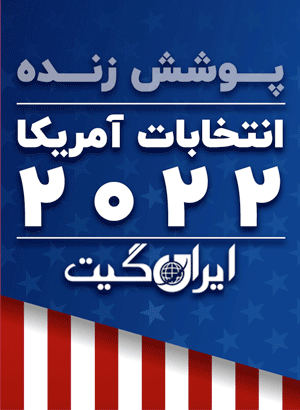Corruption in the Shamkhani family
According to Iran Gate, there are numerous circles of mafia involved in unofficial oil and petrochemical exports, and one of the most important ones is the collaboration between Hossein Shamkhani and Ehsan Tehriri.
But the most sensitive aspect of this case is related to the method of transferring Iranian oil to destination countries, with one of the most important routes being the multiple ports in China. The information obtained by Iran Gate indicates the existence of a line called the Hamburg Chain, which is the main axis of bypassing oil sanctions by a mafia gang under the management of Hossein Shamkhani.
The corruption case in the Shamkhani family has been widely discussed for over a year. Hossein Shamkhani’s role in this case is so prominent that the importance of tracking his activities cannot be ignored. The most significant part of Hossein Shamkhani’s activities is related to his dealings with several key figures in the mentioned case, which are discussed in this report.
The investigation into the corruption case of the Shamkhani family has reached its third phase, where the activities of Hossein Shamkhani have come under increased scrutiny. Iran Gate has obtained new documents and evidence that could significantly contribute to solving the mystery surrounding the Shamkhani family. In this third part of the case, an examination of these documents and evidence has been conducted, which describes Hossein Shamkhani’s role in circumventing oil sanctions.
Ghost Fleet
As has been repeatedly mentioned in the media, the Islamic Republic of Iran generally uses oil tankers to circumvent oil sanctions by turning off their radars to avoid detection by international monitoring bodies. The Shamkhani mafia group follows the same pattern precisely to evade oil sanctions.
This is why journalists like Saeed Aganji refer to the oil tankers used by the Shamkhani mafia group as the ‘Ghost Fleet.’ The term ‘Ghost Fleet’ generally refers to a group of oil tankers that clandestinely deliver oil to customers to bypass oil sanctions. The use of this fleet in circumventing oil sanctions is also clearly visible in the case of Venezuela.
Tracking the Ghost Fleet by Iran Gate
Iran Gate has obtained information that reveals the routes used by ghost fleets to bypass oil sanctions. According to this information, it is possible to track the movement routes of ships as well as the location of flag changes.
One of the most important routes that the ghost fleets, led by Hossein Shamkhani, use is the Hamburg Line. The main highway of this line is the Suez Canal, which is known as the gateway for these ships to enter the Mediterranean Sea. This route, which is the most significant unofficial oil export route to China, has been accompanied by many controversies.

The ghost ships in the Hamburg Line, as mentioned before, travel towards China through the Suez Canal. However, the main destinations of these ships are ports such as Ningbo, Shanghai, Nansha, and even Busan in South Korea.
Shamkhani’s International Partners
As mentioned, the Hamburg Line starts from the Mediterranean waters and even the North Atlantic waters and ends in the waters of China and East Asia. Among these, the role of four countries in facilitating the trouble-free passage of Shamkhani’s ghost fleets is much more prominent than other countries. According to documents obtained by Iran Gate, Germany, Turkey, India, and Malaysia are the most important international partners of Shamkhani in bypassing oil sanctions.
In some cases, these countries facilitate the transfer of Iranian oil to East and Southeast Asian countries through direct government intervention or private oil brokers and even notorious mafias operating in these countries. Therefore, it is not surprising that the mafia group led by Hossein Shemkhani has extensive corruption and money laundering networks in at least these three countries.
One of the most important mafia groups collaborating with the Shemkhani gang can be mentioned as Malaysian brokers in the energy market. These brokers, along with Turkish intermediaries, play a crucial role in bypassing Iran’s oil sanctions. Some cases pursued by the United States government have also implicated oil brokers in these activities.
Of course, the international collaborators of the Shemkhani gang are not limited to oil brokers. There are also corrupt groups active in money laundering, which are among the most important networks involved in this corruption case. Among these networks, Ehsan Taheri and Mostafa Mahzoon play significant roles, as introduced by Saeed Aganji.
As mentioned in the second part, the scope of activities of the Shemkhani Mafia group is very extensive. This group requires cooperation from other circles in various fields, including money laundering. The fourth part of this case focuses on the role of other collaborators of the Shemkhani Mafia group.
The special case of Shemkhani has been examined and documented exclusively by Iran Gate. You can read the other sections of this article from the following links.
- زیر و بم فساد در خاندان شمخانی / قسمت سوم (در حال مطالعه این قسمت هستید)
English
View this article in English


